With so many dashboard warning lights, “what does this warning light mean?” is a universally asked question by drivers with little to no idea what some newly illuminated icon is that’s appeared unannounced behind their steering wheel.
“What do I do now?” is most likely the follow-up question.
In this guide, we take a look at six of the most typically recognised dashboard warning lights, what they mean, and what to do when you spot them.
Your car’s onboard computer is called its engine management system, and it’s this system which communicates with sensors in and around your car’s engine to guarantee the safe running of your vehicles engine components. It also helps you reduce emissions and increase fuel economy.
Quite handy to have, right?
Some dashboard warning lights are specific to certain makes and models of car, but for the most part, they are universal, or very similar across the board.
Let’s have a look at some of the most common dashboard warning lights that you might see.
Engine Management Light
Otherwise known as the Malfunction Indicator Lamp (MIL), this usually illuminates red or dark orange in colour, but this can vary. It should light up when the ignition is turned on and will extinguish when the engine is switched on.
If it is still visible when the engine is running it indicates there is a malfunction with the engine management system. This needs to be checked by a qualified mechanic as soon as possible.
If it flashes whilst driving, avoid high speeds and heavy acceleration and seek assistance straight away.
Find out more by reading Engine Management Light: What You Need To Know
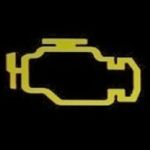
Oil pressure warning light
As with the engine warning light, this should flash up when you turn on the ignition, and instantly disappear when you start the engine itself.
If this isn’t the case, and you’re about to set off, or you’re on a journey, turn off the engine and check your car’s oil level.
When the oil is low, make sure to top this up straight away. However, if the dashboard warning light is still glowing, seek assistance from your local garage, or the place where you bought your motor.
Find out more by reading Oil Warning Light: Why You Must Not Ignore It
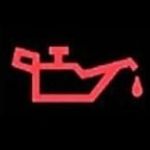
Battery charge warning light
This should illuminate when the ignition is turned on and will extinguish when the engine is started if it’s working as it should be.
If it does not light up at all, or it appears when you’re on a journey then your battery isn’t being charged due to a fault with the battery charge system.
Causes for this warning light showing could be due to a loose or corroded connection on the car battery’s terminals, a faulty alternator or a flat battery. Make sure your vehicle is in a safe place and seek assistance as soon as possible.
Find out more by reading Battery Warning Light: Are You Losing Charge?
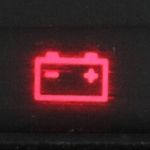
Brake system warning light
Your brake system light should be on when your handbrake is on. If this isn’t correct and the icon stays on when you remove your handbrake, it may mean your brake fluid level is low. For this, you will need to add brake fluid immediately to the required level.
If, after filling up the brake fluid the icon is still showing, seek assistance from a local garage or your dealer, as there could be another problem.
Find out more by reading Brake Warning Light: How To React

ABS warning light
ABS is short for Anti-Lock Braking System and it’s this smart system which maintains your car’s traction, prevents skidding and stops the wheels of the vehicle locking up under heavy braking.
The icon for this will light up when you’re driving if you have an issue with your ABS. This must be checked as soon as possible. The ABS light will briefly illuminate when you start your engine and then disappears once the engine is switched on.
Normal braking is usually maintained for your vehicle and you should be alright to drive on, but for some cars, this isn’t always the case. If you’re unsure, check your car’s handbook for advice, and get your vehicle checked promptly.
Find out more by reading ABS Light: What To Do When It Comes On

Coolant warning light
If this dashboard warning light appears while you’re driving, stop the car as soon as it’s safe to do so and turn off the engine.
This warning light indicates that your engine system is very hot, to the point of being dangerous, and serious damage could follow, to both yourself and your car.
Once you have turned off the engine, wait for the engine to cool down and check the level of coolant you have available.
Possible causes for the warning light appearing could be that you have a blockage in the coolant system, some sort of leak, or insufficient coolant.
Find out more by reading Coolant Warning Light: What You Should Do
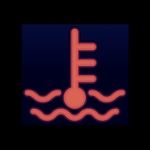
DPF warning light
The DPF warning light illuminates on your dashboard when there’s an issue with your diesel particulate filter.
Every diesel car produced since 2009 has a DPF fitted to the exhaust system, which helps to reduce emissions.
Occasionally, this filter can become clogged, causing the DPF system to fail and the warning light to become illuminated.
There are steps you can take to try to fix the issue, but you should look to have your vehicle checked at your local garage as soon as possible, as it can turn into a more serious problem if ignored.
Find out more by reading DPF Light: What Diesel Drivers Need To Know
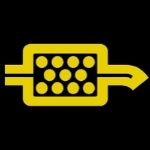
Power steering warning light
Your power steering is an incredibly important part of your car and its failure can be extremely dangerous, especially if it happens at speed.
If you’re driving and you notice your power steering warning light illuminate on your dashboard, it’s likely to happen at the same time as you notice your steering become a lot heavier.
If this happens, you should look to pull over as soon as it’s safe. There are some checks you can do, but they depend on the type of power steering your car has.
Find out more by reading Power Steering Warning Light: What Causes It?

AdBlue Warning Light
Seeing an AdBlue warning light on your dashboard means your car’s AdBlue tank, a fluid used to reduce emissions, is getting low.
It’s usually yellow and appears when you have around 1,500 miles left. Don’t wait until it’s empty!
Top up the AdBlue at your earliest convenience, typically at a petrol station or service garage. If you ignore the light for too long, it might turn red, which means very low AdBlue and potentially being unable to restart your engine.
Check your car’s handbook for specific instructions on refilling AdBlue and what your symbol will look like as this can depend on the manufacturer.

Tyre pressure warning light
This dashboard warning light becomes illuminated when the tyre pressure monitoring system, or TPMS, notices that one or more of your vehicle’s tyres has dropped in pressure.
If this happens whilst you’re driving, you should take immediate action to reduce the chances of having an accident, as tyres with low pressure can have a detrimental effect on your vehicle’s handling.
Find out more by reading Tyre Pressure Warning Light: What The TPMS Light Means
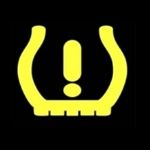
Top tip:
Read through your owner’s manual and familiarise yourself with the array of dashboard warning lights. This will help you recognise them, know what they mean and be prepared to take the appropriate action.